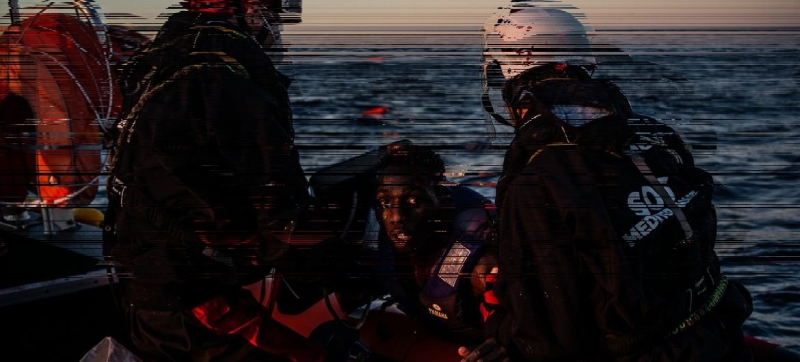- Developing countries united for a Just Transition Mechanism |
- UN Warns of Worsening Hunger Crisis Threatening Millions |
- Alamdanga’s disabled Zahurul sees the world through his hands |
- Touhid dismisses Indian media reports linking Dhaka for Delhi blast |
- IOM, HCI partner to combat human trafficking in Rohingya camps |
Shipwreck off Libya Renews Call for Safer Migration Routes

A migrant is rescued in the Mediterranean Sea. (file)
At least 42 people are missing and presumed dead following a shipwreck off the coast of Libya — the latest tragedy in the Central Mediterranean, where more than 1,000 lives have already been lost this year.
According to the International Organization for Migration (IOM), the victims were among 49 migrants and refugees who departed from Zuwara, in northwest Libya, around 3 a.m. on 3 November.
The rubber boat reportedly capsized about six hours later after high waves caused its engine to fail, throwing all 47 men and two women overboard.
Adrift at sea
The vessel drifted for six days before Libyan authorities rescued seven survivors — four from Sudan, two from Nigeria, and one from Cameroon — on 8 November.
The missing include 29 people from Sudan, eight from Somalia, three from Cameroon, and two from Nigeria.
“IOM’s team provided the survivors with emergency medical care, water, and food upon arrival at the disembarkation point, in coordination with the relevant authorities,” the agency said in a statement.
Call for safer migration
The incident follows a series of deadly shipwrecks in recent weeks off Surman, Libya, and near the Italian island of Lampedusa.
Data from IOM’s Missing Migrants Project show that deaths in the Central Mediterranean have already exceeded 1,000 this year, as people continue to risk the perilous sea crossing to Europe.
“With this latest shipwreck, the total has risen even further, underscoring the urgent need for stronger regional cooperation, expanded safe and regular migration pathways, and more effective search-and-rescue operations to prevent further loss of life,” the IOM said.
World’s deadliest migration route
Since its establishment in 2014, the Missing Migrants Project has recorded more than 25,600 deaths or disappearances in the Central Mediterranean, which stretches from North Africa to Italy.
The route remains the world’s deadliest for migrants, due to long and hazardous journeys, dangerous smuggling networks, limited rescue capacity, and restrictions on NGOs carrying out life-saving missions.
Most migrants attempt the crossing in unseaworthy, overcrowded inflatable boats, many of which are launched simultaneously — making rescue operations even more challenging.

